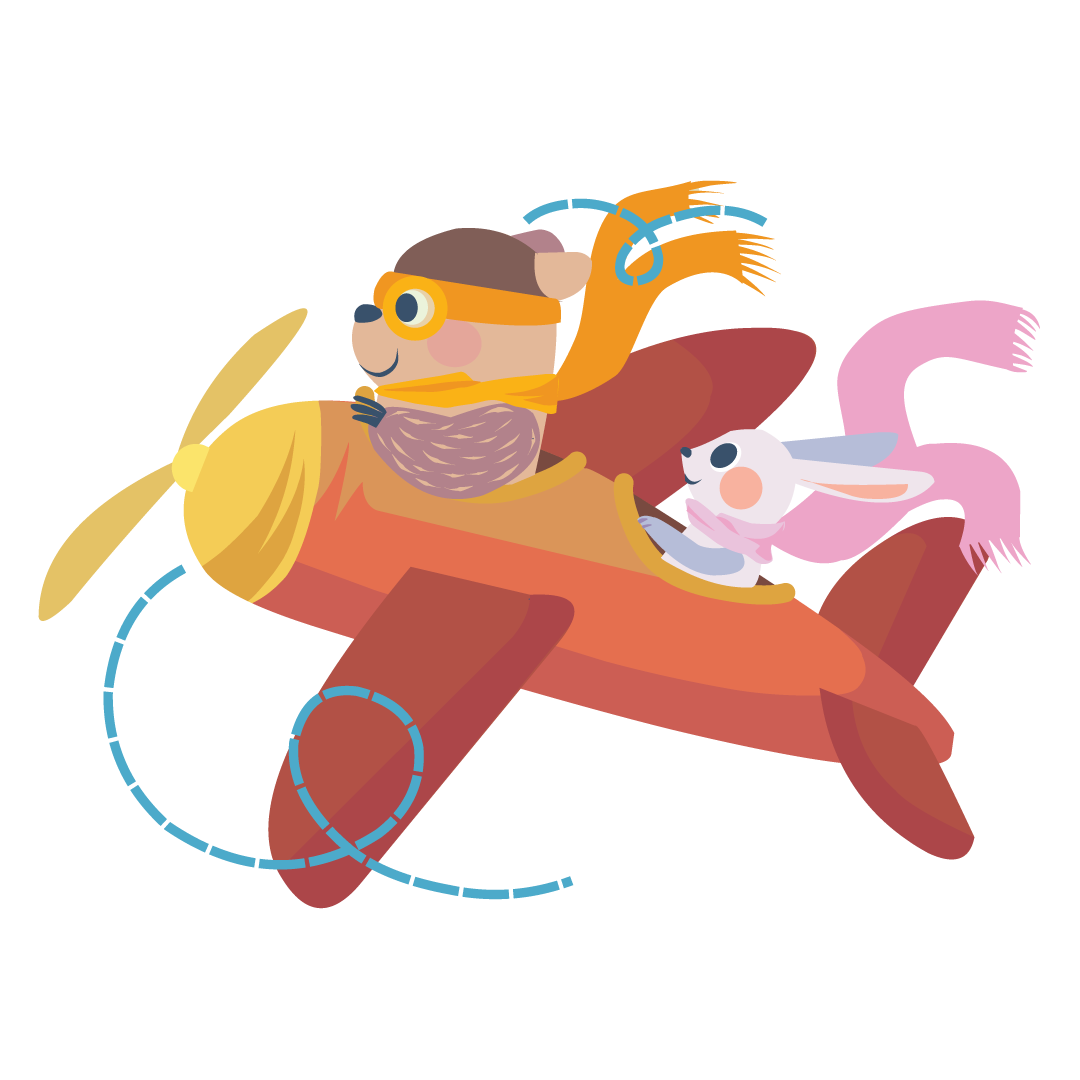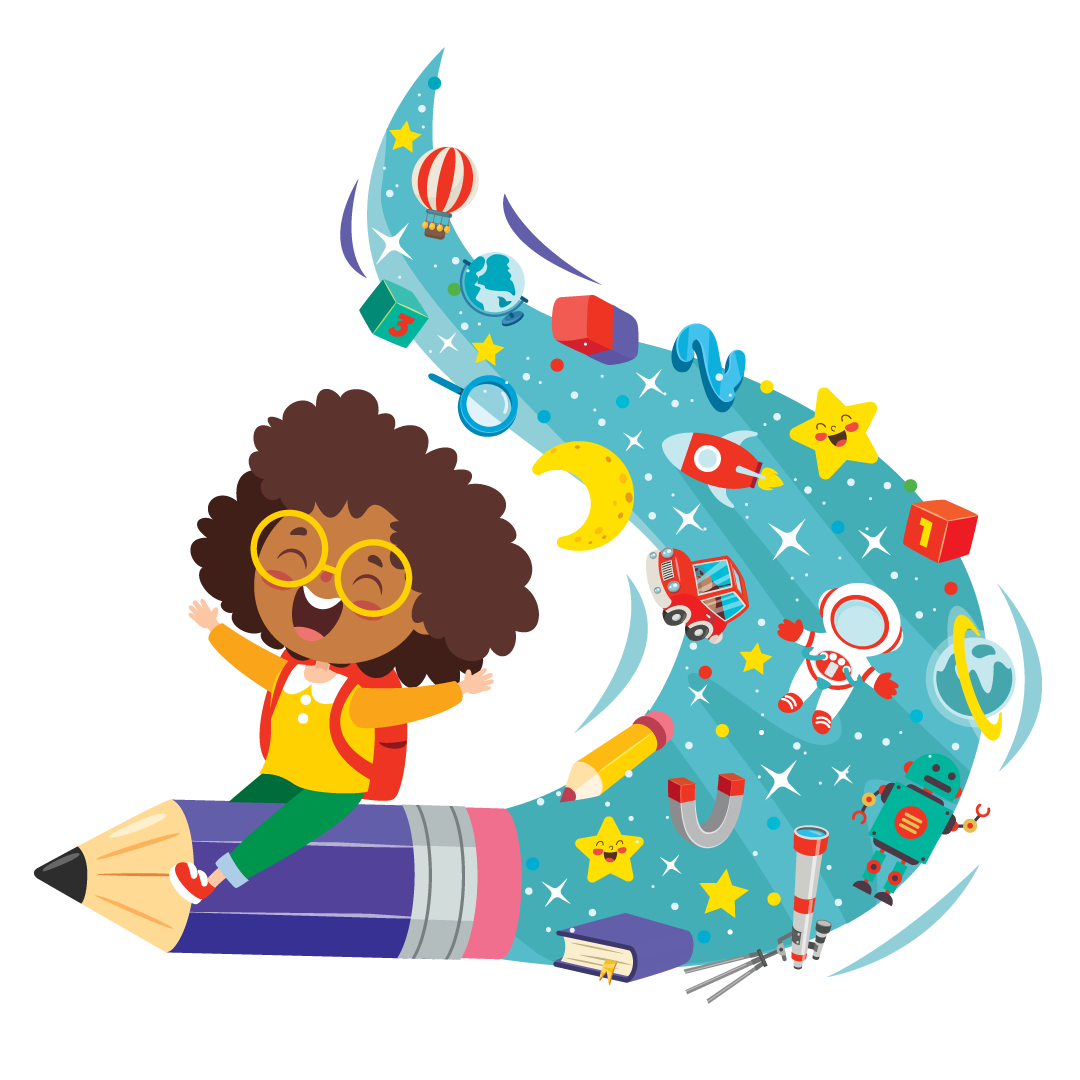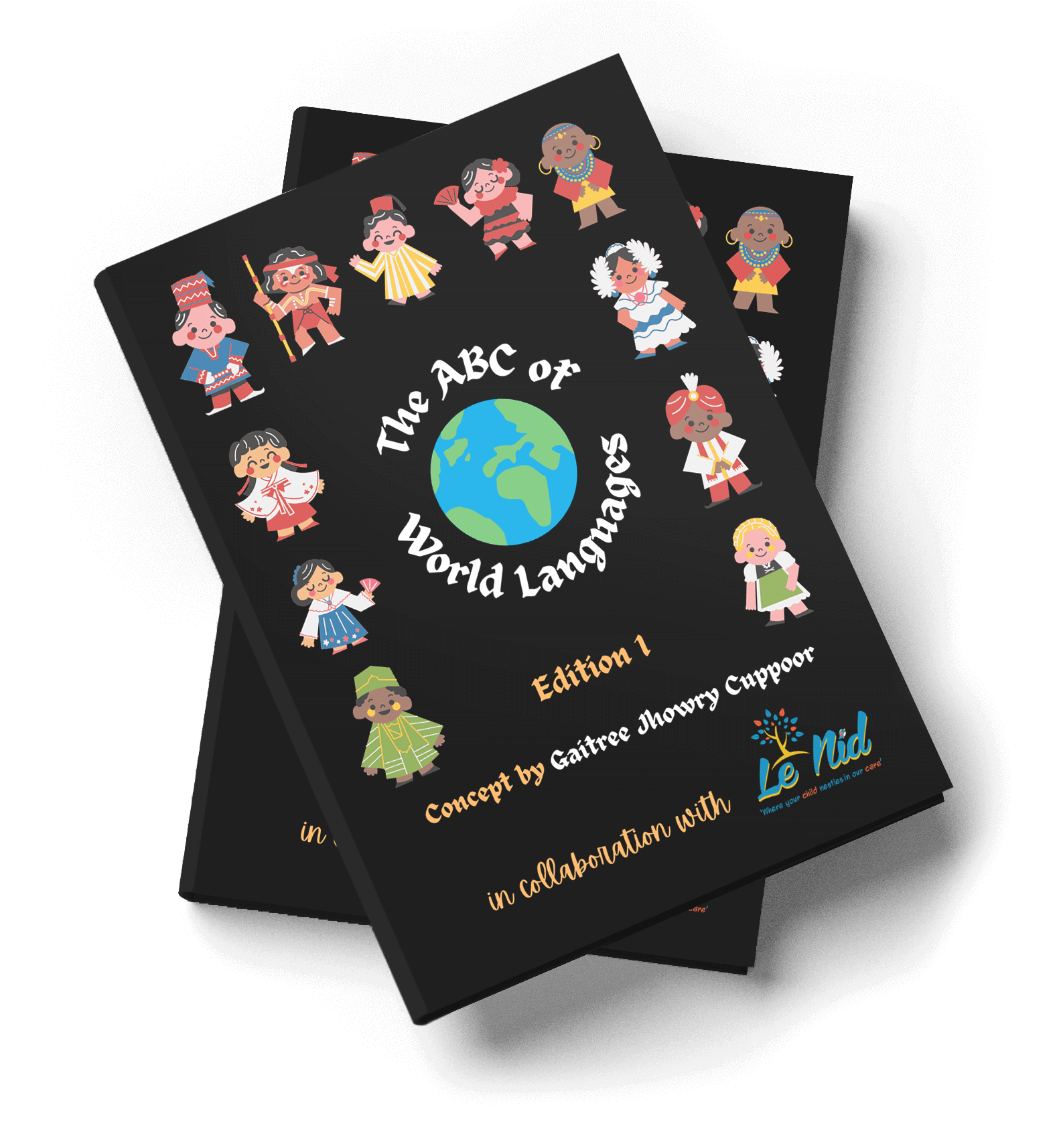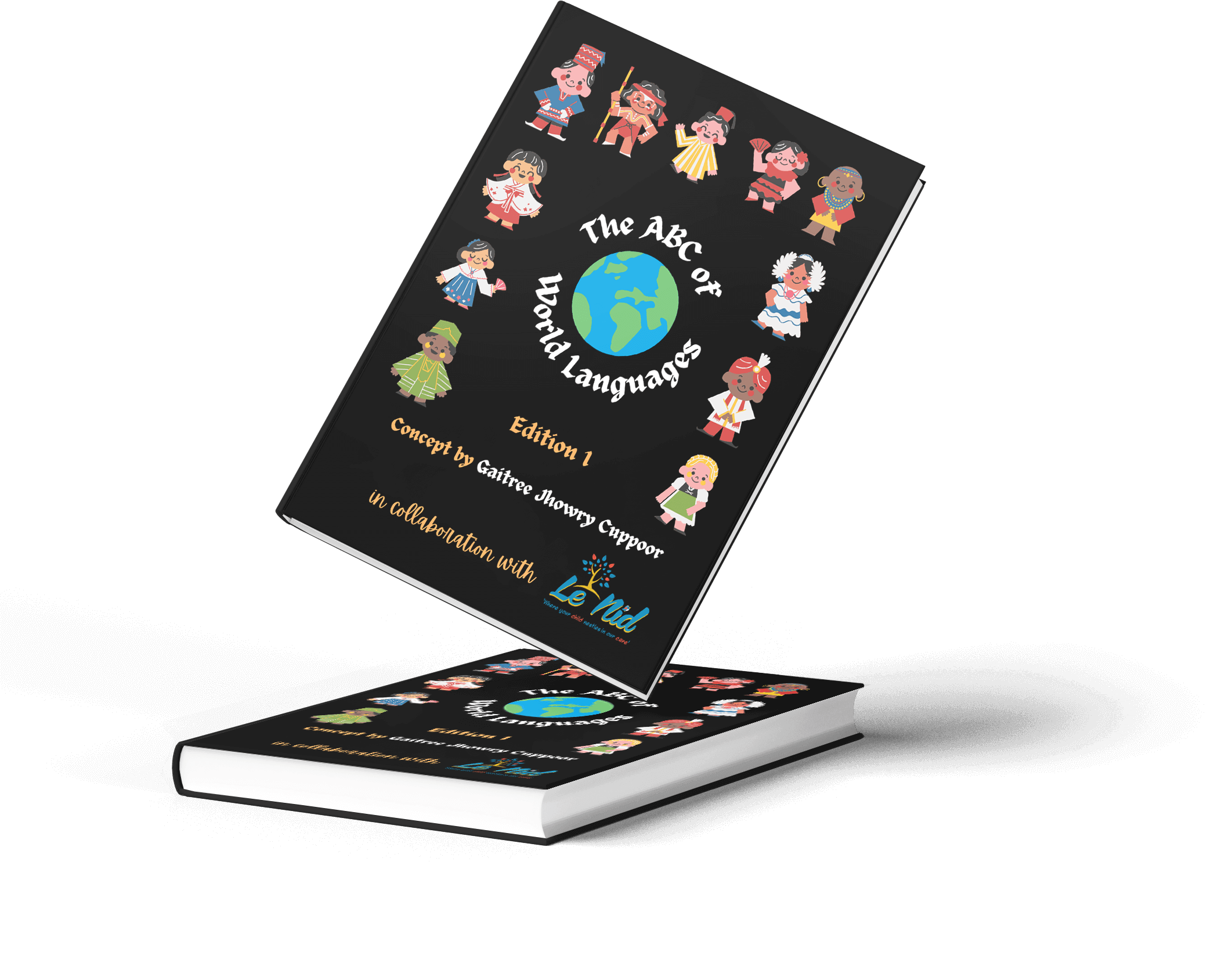The ABC of world languages
This book is a concept based on a compilation of existing nursery rhymes, folklore songs from different cultures, languages, and countries. These may have lost in the emergence of the millennial trends but still bring back memories for many of us. The core message is that languages are beautiful and whether they rhyme or not, they certainly show the multi-cultural facets of the world. This book is a showcase of the childhood for many of us. Languages are not just words, they embody the traditions, the cultures, the sweet memories as we grew up.


About this book
This concept is created by Gaitree Jhowry Cuppoor who is passionate about languages. She is from the Republic of Mauritius, a country, known as the Tiger of the Indian Ocean and paradise island. She speaks 4 languages – English, French, Hindi and Mauritian Creole. Being a multilingual person, her aim with the first edition of this book “The ABC of World Languages” is to showcase 26 different languages including her native mother tongue.
With yet so many languages left to be explored, Gaitree aims to publish an Edition 2 in the foreseeable future with another 26 languages to celebrate.
About Le Nid Childcare
Le Nid Childcare was established in September 2013 as a children’s nursery until 2018. It has evolved since then to promoting French language, nursery consultancy, and language lessons to children in the early years.
Over the years, we have come across so many cultures and languages here in London, a true cultural melting pot.
The book is launched in May 2024 to mark the 10th anniversary year with the intention to bring the global community together as a celebration of unity, diversity and language promotion.

Key Features to Buy This Book
- Promote diversity and language promotion.
- Fun way to learn ABC for our young readers.
- Introduce knowledge of different languages.



- Keepsake of memories of the nursery rhymes, traditional and folk song.
- A book for all ages, generations sharing loving childhood memories.
- A perfect gift of unity – bring the world of languages together.
Testimonial
As a teacher I think singing nursery rhymes is a very good way to teach children new words or even a whole new language. I have been teaching children for over 8 years now and I have personally experienced the confidence nursery rhymes give children, and in particular children who do not speak the language. I have seen children that did not speak Dutch at all, grow and learn through singing nursery rhymes. It helped them even more when I used TPR: a method of teaching language or vocabulary concepts by using physical movement to react to verbal input. There was no better feeling than when children started talking in their new language, showing less frustration and being able to express their feelings and emotions.
Kirsten N M Dutch speaking Teacher in LondonWe used to sing this nursery rhyme with my friends back in my hometown, Antalya Turkey and it always made us feel happy and positive.
Melis B Turkish speaking mummy in LondonWhen I was a child in South East Wales even English medium schools taught children traditional Welsh songs, rhymes, anthems and basic Welsh words and phrases. So I learned Lliwiau Enfys at an early age. I enjoy teaching my grandchildren the Welsh words for things and rhymes like Lliwiau Enfys. I think it’s good for them to remember their Welsh heritage.
Sally Welsh Nana living in London since 1988Spring is my favourite season. Growing up in northern Japan where winter is bitterly cold, I always looked forward to the arrival of spring. 'Haru ga kita' is a joyful song celebrating the season, and I have fond memories of singing it as a child, filled with excitement for the beautiful days ahead.
Noriko M Japanese speaking Artist & Children's Author & Illustrator in EnglandThere is no doubt that Nursery rhymes and songs have always helped in the teaching of any languages. I personally had recourse to them...to arouse the kid's interest.... We used to sing......a,b,c,d...e,f ..g,h....I,j..k,l,m,n .....o,p,q,r,s,t.....u,v...w,x,y,z. I used to write the rhymes and songs on board and it was really amazing how the kids were able to read the words after some time... Numbers were taught as well using rhyme such as One ,two,three ,four Knock at the door
Indira C Retired Primary School Headteacher in MauritiusBalon ku ada lima” is one of the first songs I learned as a child, at about three years of age. My youngest niece, Natasha, has just turned three, and I sang it with her via videocall. She knew all the words. Through songs and rhymes, Indonesian children learn many things, about animals, counting and colours, and develop the social skills and friendship of singing together. When they are grown, they pass the rhymes to their children, generation after generation. Rhymes are deeply embedded in our culture.
Juliana Elfrida S Bataknese Indonesian, living in London since 2009The rhythm of this poem transports me back to my childhood when my mother and grandmother were singing to me. Singing it to my daughter is a moment of ‘partage’ and makes me feel like a child again .
Marie Victoire S French mother , living in LondonThis enchanting French rhyme takes me back to my childhood days. It was more than just a song; it was the soundtrack to laughter-filled lunch breaks with my friends in our primary schoolyard. We became characters from the song, singing joyfully and playing tag as the wolf chased us. Back then, we didn't realise this playful song was secretly teaching us French verbs, vocabulary and grammar. It was an unconscious lesson in language, wrapped in the joy of play. Now, as a French teacher, I use this song not just for its delightful tunes but as a valuable teaching tool. It's a reminder that learning can be both entertaining and linguistically enriching. Finding it in a book about languages is like stumbling upon a well-worn page of my own heartwarming journey through the past, making the act of learning feel like a comforting stroll down memory lane.
Jyotika C French teacher living in Ireland©Copyright 2024. All Rights Reserved. lenidchildcare
